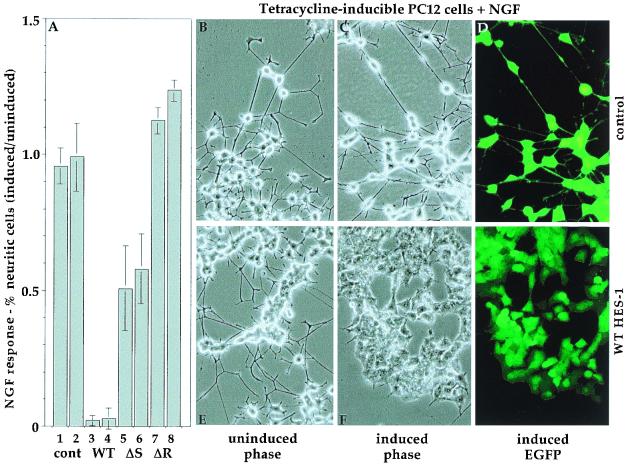FIG. 2.
The H-3/4 domain of HES-1 partially mediates the inhibition of NGF response. The NGF response of tetracycline-inducible PC12 cells is graphed as the percentage of induced (without tetracycline) response divided by the percentage of uninduced (with tetracycline) response following 6 days of treatment with NGF (A). The NGF response for two control cell lines is unaffected by EGFP induction (columns 1 and 2). In contrast, induction of WT HES-1 greatly inhibits NGF response (columns 3 and 4). Expression of ΔS HES-1, which contains the H-3/4 domain but lacks the WRPW motif, significantly inhibits NGF response (columns 5 and 6). Expression of ΔR HES-1, which lacks both the H-3/4 and WRPW regions, does not inhibit NGF response (columns 7 and 8). Control PC12 cells, which expressed only EGFP upon induction, differentiated into a neuronal phenotype following 7 days of treatment with NGF (B to D). Induction of EGFP, seen by fluorescence microscopy in panel D, did not affect neurite outgrowth response to NGF (C). Uninduced WT HES-1 cells (E) had a NGF response similar to that of control cells (B). Upon induction of HES-1 by the removal of tetracycline, the cells no longer responded even after 7 days of NGF treatment (F and G) and have the flattened morphology of the induced cells seen in Fig. 1E. If the induced WT HES-1 cells were subsequently uninduced and then reexposed to NGF, they regained NGF-induced neurite response (data not shown).

